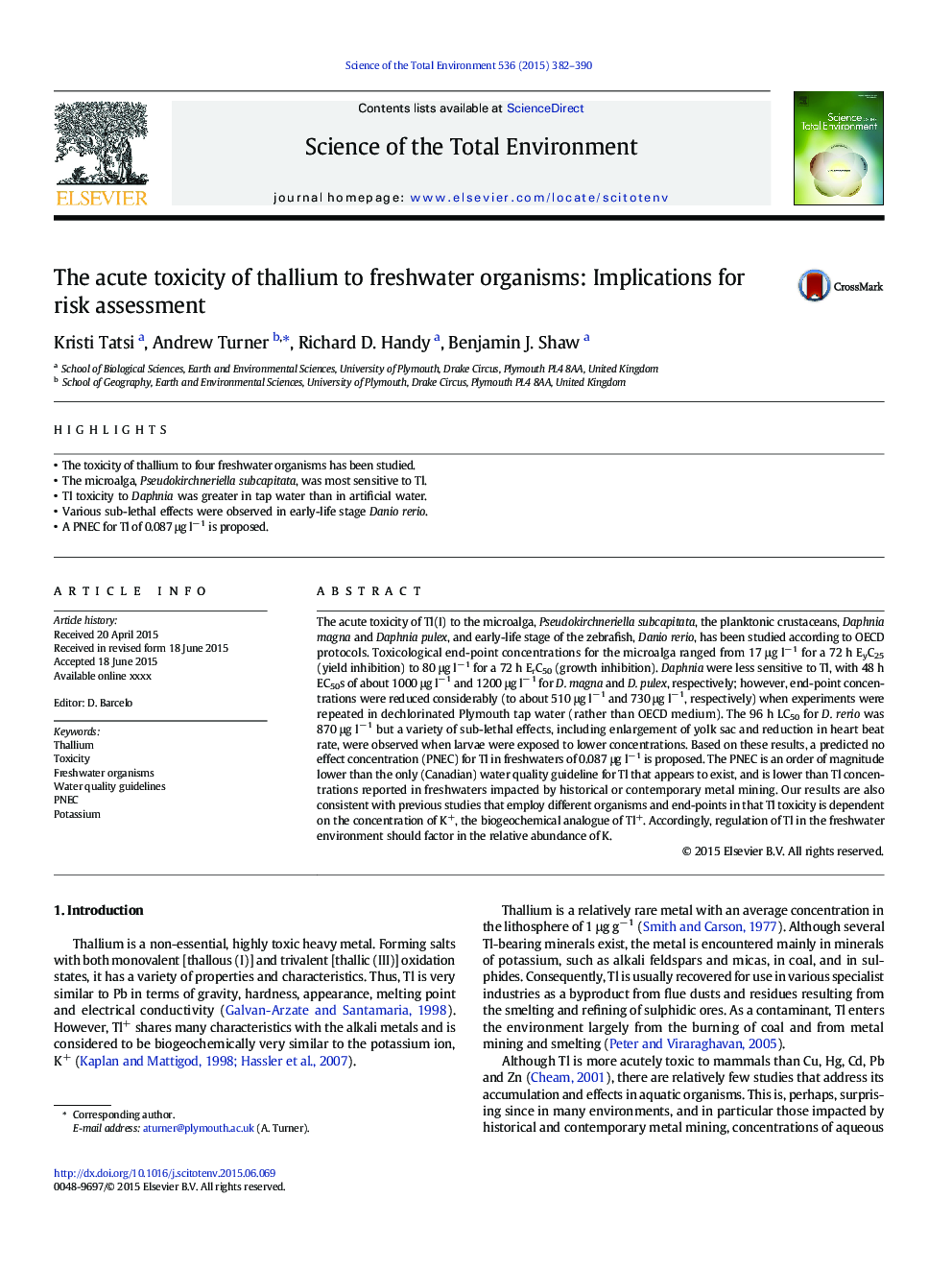| Article ID | Journal | Published Year | Pages | File Type |
|---|---|---|---|---|
| 6325952 | Science of The Total Environment | 2015 | 9 Pages |
Abstract
The acute toxicity of Tl(I) to the microalga, Pseudokirchneriella subcapitata, the planktonic crustaceans, Daphnia magna and Daphnia pulex, and early-life stage of the zebrafish, Danio rerio, has been studied according to OECD protocols. Toxicological end-point concentrations for the microalga ranged from 17 μg lâ 1 for a 72 h EyC25 (yield inhibition) to 80 μg lâ 1 for a 72 h ErC50 (growth inhibition). Daphnia were less sensitive to Tl, with 48 h EC50s of about 1000 μg lâ 1 and 1200 μg lâ 1 for D. magna and D. pulex, respectively; however, end-point concentrations were reduced considerably (to about 510 μg lâ 1 and 730 μg lâ 1, respectively) when experiments were repeated in dechlorinated Plymouth tap water (rather than OECD medium). The 96 h LC50 for D. rerio was 870 μg lâ 1 but a variety of sub-lethal effects, including enlargement of yolk sac and reduction in heart beat rate, were observed when larvae were exposed to lower concentrations. Based on these results, a predicted no effect concentration (PNEC) for Tl in freshwaters of 0.087 μg lâ 1 is proposed. The PNEC is an order of magnitude lower than the only (Canadian) water quality guideline for Tl that appears to exist, and is lower than Tl concentrations reported in freshwaters impacted by historical or contemporary metal mining. Our results are also consistent with previous studies that employ different organisms and end-points in that Tl toxicity is dependent on the concentration of K+, the biogeochemical analogue of Tl+. Accordingly, regulation of Tl in the freshwater environment should factor in the relative abundance of K.
Related Topics
Life Sciences
Environmental Science
Environmental Chemistry
Authors
Kristi Tatsi, Andrew Turner, Richard D. Handy, Benjamin J. Shaw,
